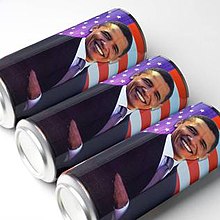This article has multiple issues. Please help improve it or discuss these issues on the talk page. (Learn how and when to remove these messages)
|

Tonejet is a drop-on-demand inkjet printing technology that enables the direct digital deposition of printing ink onto substrates. The Tonejet digital printing process is targeted at commercial and industrial applications.
Tonejet was first disclosed in Patent Cooperation Treaty publication WO 93/11866 dated June 24, 1993, with the inventor named as Luis Lima-Marques assigned to Research Laboratories of Australia Pty. Ltd., in Adelaide, Australia. A number of patents relating to the technology, including United States Patent 6,260,954, have been granted. Research Laboratories of Australia formed a partnership with The Technology Partnership plc, a technology and product development company from the UK, to add hardware development expertise. Tonejet now has its headquarters in Cambridge, UK.
Process
The Tonejet process is an electrostatic drop-on-demand deposition technology that enables high-quality images to be printed onto virtually any type of absorbing or non-absorbing substrate at high speed. The Tonejet process consists of electrostatic concentration and ejection of particles from a fluid. The Tonejet print head enables an electric field to be applied to the ink. The Tonejet ink is a key part of the ejection process; it consists of electrically charged conventional pigments in a non-conductive liquid. In the Tonejet printhead, an electric force is applied directly to the charged ink particles. The longer the electric pulse is applied, the more ink is ejected. The Tonejet ejection process concentrates the ink prior to ejecting the droplets onto the substrate, with continuous greyscale control. The Tonejet printhead is a three-dimensional structure consisting of side walls, flow channels and ejectors. An ink meniscus is formed between the side walls and the ejector. The Tonejet printhead is therefore a simple, nozzleless, open structure.
Commercial products
In late 2007, Tonejet announced that it had produced the world's widest integral printhead for use in an industrial printer. The 172 mm (6.8 in) wide printhead would enable the vast majority of food and drink packaging to be printed in a single pass, thereby bringing substantial logistics and cost savings to the packaging industry.
In 2008, Ball Packaging Europe announced that in cooperation with Tonejet, they would supply individually designed beverage cans using the Tonejet process with photo quality, 600 dpi resolution.
In June 2010, Air Berlin launched its own line of beverage cans after becoming the first customer for Ball Packaging Europe's technology co-operation with Tonejet. There is some interest particularly in printing cans for the craft beer market.
See also
References
- Teape, John. "Tonejet: A New Standard in Digital Printing", The Society for Imaging Science and Technology, NIP18 Conference Proceedings, pg.145-147, 2001, ISBN 0-89208-240-2
- Lima-Marques, Luis. "Method and Apparatus for the Production of Discrete Agglomerations of Particulate Matter", "U.S. Patent, 6,260,954", 2001
- Blackstone Research Associates. "Color Business Report", Volume 17 Number 8, August 2007
- Newcombe, Guy. "Meeting the needs of the Packaging Industry", Tonejet Ltd. 2009 Archived 2011-07-17 at the Wayback Machine
- Kiernan, Steven."Tonejet project develops world's widest integral printhead", printweek.com, November 11, 2007 Archived July 20, 2011, at the Wayback Machine
- Ball Packaging Europe."Brau 2008: Individual design thanks to digital printing", ball-europe.com, November 12, 2008 Archived July 7, 2011, at the Wayback Machine
- Brooks, Josh."Air Berlin revealed as first customer for Tonejet's inkjet cans", packagingnews.co.uk, June 6, 2010
- "Tonejet - A can-do attitude - Packaging & Converting Intelligence".
- "Systems for can makers from Tonejet".
- "Print anything on craft beer cans with this new digital printer". 18 September 2014.